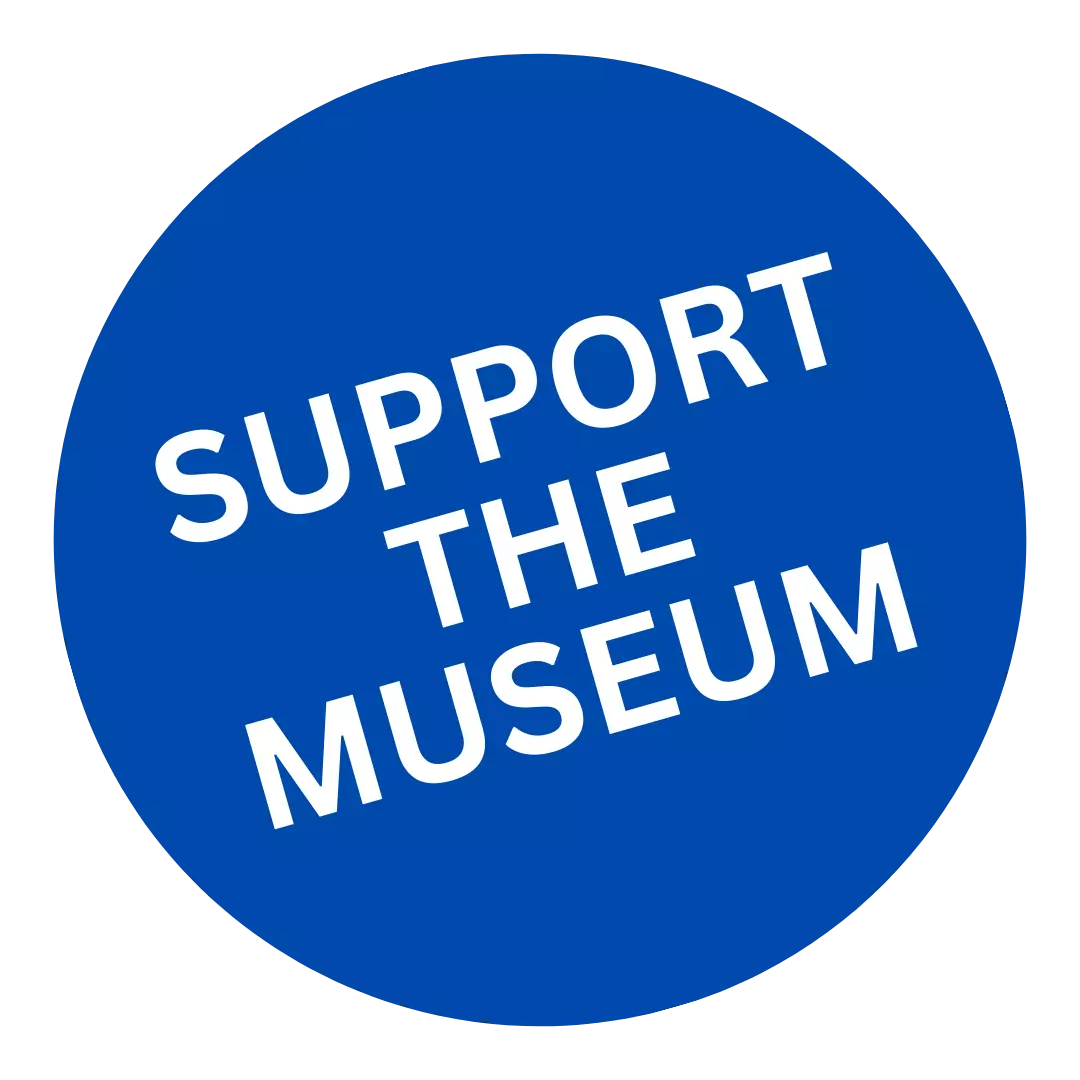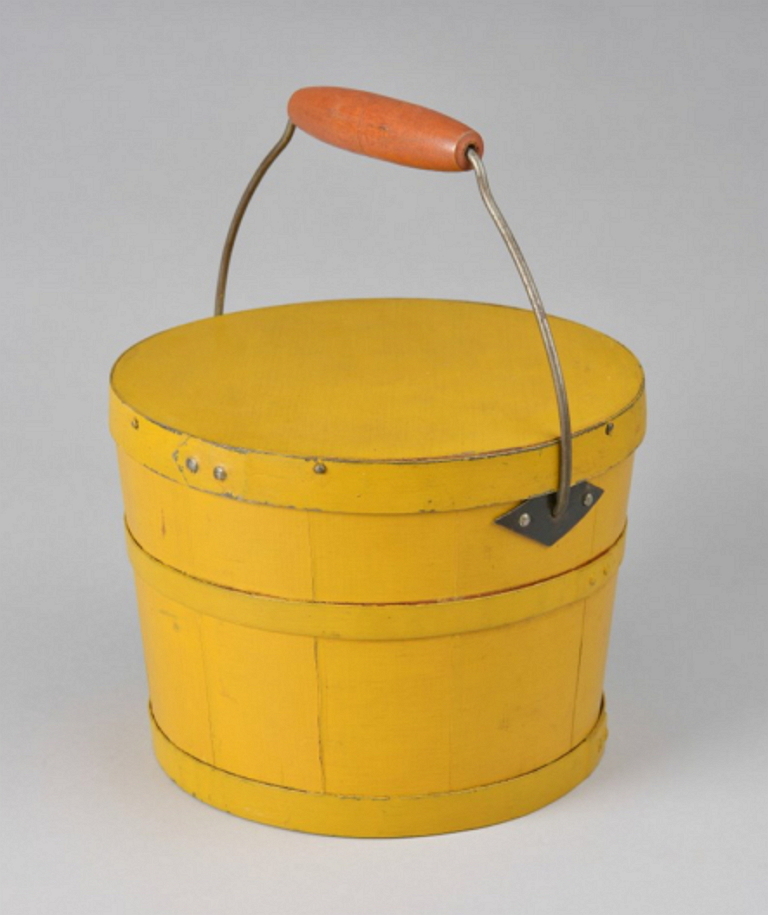Box, Spit
Spit box painted yellow, made at the Church Family, Mount Lebanon, NY
Description
Round unlidded container with sugar maple side band and reinforcing rim and a white pine bottom. The side band has four carefully cut swallowtails overlapping the feathered inside and of the band which are secured with copper tacks. The rim ends are also feathered and overlapped and the rim is secured to the box band by copper tacks as well. The bottom is held in place with copper shoe pegs. The box exterior was originally painted bright red; then bright yellow paint was applied to the entire box, inside and out.
Notes
The Shakers at Mount Lebanon manufactured two separate classes of bentwood products. Those in the first were made of elm and were heavy, round-rimmed, undecorated containers used in workshops and in barns as measures, dippers, and sieves. Those in the second were made of maple and were delicate, oval-rimmed containers fitted with lids and/or handles and decorated with graceful "swallowtail" designs where their rims overlap that were painted and stained in a variety of bright colors or shiny varnish. These objects were generally used in dwelling houses. The materials, techniques, machinery, and personnel used to make these different kinds of objects varied greatly. Spit boxes, such as this fine example, refined the common round form of the measure and made it acceptable for a household. The use of maple, swallowtail lappers, and bold yellow color turned it into a piece of furniture. The reinforcing band around the top edge was a concession to the reality that, although furniture, the spit box was of a lower order, kept on the floor where it might be kicked. Spit boxes were receptacles for tobacco chewing brothers or sisters or for those needing to expectorate. They could be found in Shaker dwellings, shops, and meetinghouses in order that members and visitors might obey the injunction to "not spit out at the windows, on the floors, walks, cellar bottoms, nor in sinks."Spit boxes were filled with fine shavings to absorb saliva and tobacco juice. Because of this, they posed a fire danger. Three more injunctions, one stipulating that spit boxes "not be left under the stove hearth, at any time," another that the "snuff of a lamp or candle should never be dropped into spit boxes," and a third that smokers may not "empty their pipes in spit boxes," attempted to make Shakers aware of the danger.
References: "Millennial Laws, or Gospel Statutes and Ordinances Revised and re-established by the Ministry and Elders Octr 1845," as reprinted in Edward Deming Andrews, The People Called Shakers. A Search for the Perfect Society, (New York: Oxford University Press, 1953), Part III, Section 1.13, p. 280 & Section 11.6, 11, 14 p.281. John T. Kirk and Jerry V. Grant, "Forty Untouched Masterpieces of Shaker Design," The Magazine Antiques 135 (May, 1989)
New York Mount Lebanon Church Family

















